DIAMONDS: TRUE OR FALSE
CAN YOU ANSWER THESE DIAMOND & 4C'S QUESTIONS CORRECTLY?
This post contains affiliate links. If you use these links to buy something I may earn a commission. Thanks! As an Amazon Associate I also earn from qualifying purchases.
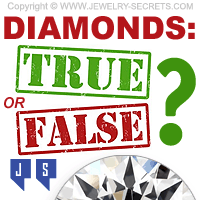
Want to test your knowledge of diamonds?
Below are 50 questions regarding diamonds. Your goal is to answer them correctly…
You have a 50/50 chance, for all of these questions are TRUE or FALSE.
Sound easy enough?
We’ll see… Enjoy the questions, I hope you learn from them. :)
(Get a pen and paper, keep track of your answers, check them after the questions.)
Good luck!
Question #1
There are actually 5C’s all together.
TRUE or FALSE
Question #2
The only 4C that man has control over is CUT.
TRUE or FALSE
Question #3
Larger diamonds are more expensive than smaller ones.
TRUE or FALSE
Question #4
The order of importance of the 4C’s are: Carat Weight, Clarity, Color, Cut.
TRUE or FALSE
Question #5
Fluorescence gives a diamond a blue glow-in-the-dark hue.
TRUE or FALSE
Question #6
All colorless diamonds are pure white.
TRUE or FALSE
Question #7
GIA will grade any diamond sent to them.
TRUE or FALSE
Question #8
VVS2 means Very, Very, Slightly 2.
TRUE or FALSE
Question #9
The cheapest cut of diamond is the cushion cut.
TRUE or FALSE
Question #10
GIA lists the princess cut diamond on a report as “princess cut”.
TRUE or FALSE
Question #11
Diamonds are graded using 30x magnification.
TRUE or FALSE
Question #12
Laser inscriptions are technically flaws on a diamond.
TRUE or FALSE
Question #13
A cracked diamond is worthless.
TRUE or FALSE
Question #14
Half carat diamonds are worth half the price of a 1 carat.
TRUE or FALSE
Question #15
Every inclusion in a diamond is shown on a diamond plot.
TRUE or FALSE
Question #16
VS is the most common clarity sold today.
TRUE or FALSE
Question #17
If a diamond has an extra facet, it affects the cut grade.
TRUE or FALSE
Question #18
There are 12 clarity grades in all: FL, IF, VVS1, VVS2, VS1, VS2, SI1, SI2, SI3, I1, I2, I3.
TRUE or FALSE
Question #19
SI2 means there are two eye visible flaws in the stone.
TRUE or FALSE
Question #20
You can determine the carat weight of a diamond by measuring the width of the stone.
TRUE or FALSE
Question #21
Brilliance is also known as brightness.
TRUE or FALSE
Question #22
Diamonds with fire have a lot of red play of color in them.
TRUE or FALSE
Question #23
The crown of a brilliant cut diamond has 58 facets.
TRUE or FALSE
Question #24
The very first cut of diamond was called the point cut.
TRUE or FALSE
Question #25
A nail head is a diamond with a large culet that looks like a hole in the diamond.
TRUE or FALSE
Question #26
The culet is the pointed end of the diamond.
TRUE or FALSE
Question #27
Only “excellent” cut diamonds can have excellent symmetry and polish.
TRUE or FALSE
Question #28
For a diamond to be perfect, it must be certified.
TRUE or FALSE
Question #29
Fancy diamonds are diamonds with vivid color.
TRUE or FALSE
Question #30
A princess cut diamond is square.
TRUE or FALSE
Question #31
A single cut diamond means there is only one single facet on top.
TRUE or FALSE
Question #32
D-Z diamonds are colors that are either white or yellow.
TRUE or FALSE
Question #33
There are 26 color grades in all.
TRUE or FALSE
Question #34
The color of a diamond is affected by the mounting it is in.
TRUE or FALSE
Question #35
Diamond color is only graded from the upside down view.
TRUE or FALSE
Question #36
If a diamond is brown, it’s called a “chocolate” diamond.
TRUE or FALSE
Question #37
A “pit” is a diamond inclusion.
TRUE or FALSE
Question #38
Princess cuts are the most brilliant cut of diamond there is.
TRUE or FALSE
Question #39
Perfectly cut “Hearts & Arrows” can be seen with a microscope.
TRUE or FALSE
Question #40
The girdle is a straight flat edge that runs around the outside of a diamond.
TRUE or FALSE
Question #41
GIA has 6 cut grades.
TRUE or FALSE
Question #42
The shape of the culet is round.
TRUE or FALSE
Question #43
Diamonds are laser drilled to make them lighter.
TRUE or FALSE
Question #44
A 1 point diamond weighs the same as 1 carob seed.
TRUE or FALSE
Question #45
“Carat Weight” is the same thing as “Carat Total Weight”.
TRUE or FALSE
Question #46
Diamonds are made of 100% graphite.
TRUE or FALSE
Question #47
A “light” carat diamond is a diamond with extreme brilliance.
TRUE or FALSE
Question #48
Diamonds dull up and lose their sparkle over time.
TRUE or FALSE
Question #49
Bleach makes diamonds brittle.
TRUE or FALSE
Question #50
The most popular clarity and color is: SI1, G-H.
TRUE or FALSE
BONUS Question #51
The rarest diamond color is purple.
TRUE or FALSE
BONUS Question #52
A “perfect” diamond is D color, and Flawless clarity.
TRUE or FALSE
So, how did you do?
Do you think you got most of them right?
Were they easier, or harder than you thought?
Let’s find out…
HERE ARE THE ANSWERS…
Answer #1
Question: There are actually 5C’s all together.
FALSE
Many jewelers will swear there are more, and even advertise them as such. They’ll say it stands for Certification, Cost, Confidence, or some other word that starts with C. But the truth is, there are only 4. Always have been, always will.
Answer #2
Question: The only 4C that man has control over is CUT.
FALSE
Man decides how big a stone is, and by this cutting process they also decide how clean or included a diamond is, and also what color it will be (smaller diamonds are lighter in hue than bigger stones).
Answer #3
Question: Larger diamonds are more expensive than smaller ones.
FALSE
Size is one factor in cost, but so is color, certification, cut, clarity, fluorescence, symmetry, polish… They all affect the price of a diamond.
Answer #4
Question: The order of importance of the 4C’s are: Carat Weight, Clarity, Color, Cut.
FALSE
It’s exactly the opposite: Cut, Color, Clarity, Carat Weight.
Answer #5
Question: Fluorescence gives a diamond a blue glow-in-the-dark hue.
FALSE
Fluorescence can be blue, green, yellow, orange, pink, red (like the Hope Diamond), or even white.
Answer #6
Question: All colorless diamonds are pure white.
TRUE
D, E, F, color grades are colorless, pure white, void of any color whatsoever. The only difference between them is the subtle shades of white (like many different white paint colors).
Answer #7
Question: GIA will grade any diamond sent to them.
FALSE
GIA (The Gemological Institute of America) won’t grade fracture filled diamonds, man-made diamonds, or diamonds preset into a mounting.
Answer #8
Question: VVS2 means Very, Very, Slightly 2.
FALSE
It means Very, Very, Slightly Included, Level 2.
Answer #9
Question: The cheapest cut of diamond is the cushion cut.
TRUE
Cushion cut diamonds can save you 20-50% off the price of the same quality round diamond (check out some great deals on cushion cut diamonds here).
Answer #10
Question: GIA lists the princess cut diamond on a report as “princess cut”.
FALSE
Princess cuts are listed as “square modified brilliant”.
Answer #11
Question: Diamonds are graded using 30x magnification.
FALSE
10x is the official magnification level (as seen with these professional hand-held eye loupes).
Answer #12
Question: Laser inscriptions are technically flaws on a diamond.
FALSE
All certification companies disregard inscriptions as any type of man-made flaw, simply because they are meant for identification purposes, preventing diamond switching, and giving customers peace of mind.
Answer #13
Question: A cracked diamond is worthless.
FALSE
Cracks are a type of inclusion (just like chips and fractures). Included diamonds (I1, I2, I3) could have cracks in them, and they are still worth money. Plus, many diamonds that are cracked can still be recut to remove that flaw.
Answer #14
Question: Half carat diamonds are worth half the price of a 1 carat.
FALSE
Diamonds don’t double in price as they double in size. Usually they triple and quadruple. That’s because diamonds get more rare as they get bigger in carat weight.
Answer #15
Question: Every inclusion in a diamond is shown on a diamond plot.
FALSE
Some flaws are so miniscule, so minute, so redundant, that not every flaw is shown on the plot. If they aren’t, such as a cloud, pin-point, or grain line, it will be mentioned under the comments section of the report.
Answer #16
Question: VS is the most common clarity sold today.
FALSE
SI and I clarity are the most popular clarities sold in stores today. They make up 77% of the market.
Answer #17
Question: If a diamond has an extra facet, it affects the cut grade.
FALSE
It affects the clarity grade, since extra facets are used to remove unsightly flaws or blemishes.
Answer #18
Question: There are 12 clarity grades in all: FL, IF, VVS1, VVS2, VS1, VS2, SI1, SI2, SI3, I1, I2, I3.
FALSE
There is no SI3 in the GIA clarity grading scale. EGL created this grade to act as a buffer between SI2 and I1 diamonds. But GIA will grade these SI3 diamonds as what they really are; I1 stones.
Answer #19
Question: SI2 means there are two eye visible flaws in the stone.
FALSE
SI2 means Slightly Included, Level 2. There is no set amount of flaws in any clarity grade. SI2 is all based upon the eye-clean top view, and eye-visible inclusions from a side view. Meaning, there could be 1 inclusion, there could be 50.
Answer #20
Question: You can determine the carat weight of a diamond by measuring the width of the stone.
FALSE
All diamonds are cut differently (just like people that weight 150 lbs all appear differently; short, fat, skinny, tall…) Diamonds are cut for profit from the parent rock. They utilize every inch of rock they can, meaning, some stones will be odd shaped, out of proportion, and losing light and sparkle. Plus, some cuts are longer, like the pear, marquise, heart… that measuring just the width of the stone, would be useless.
Answer #21
Question: Brilliance is also known as brightness.
TRUE
Brilliance is the amount of white light in the diamond, which is also how bright and shiny it appears.
Answer #22
Question: Diamonds with fire have a lot of red play of color in them.
FALSE
Fire means a play of colors; all colors of the rainbow (caused by the bending of white light in the stone).
Answer #23
Question: The crown of a brilliant cut diamond has 58 facets.
FALSE
The entire stone has 58 facets (33 on the crown, and 25 on the pavilion).
Answer #24
Question: The very first cut of diamond was called the point cut.
TRUE
The point cut resembles a diamond on a playing card. Pointed at both ends, it was the first step in the evolution of the modern brilliant cut diamond.
Answer #25
Question: A nail head is a diamond with a large culet that looks like a hole in the diamond.
FALSE
A nail head is when a diamond is cut too deep, loses light, and the entire center of the stone looks dark.
Answer #26
Question: The culet is the pointed end of the diamond.
FALSE
While the culet is at the tip of the diamond, it’s the removal of that point that creates the culet. They remove the very tip so it doesn’t chip or break easily (exactly like the removal of the girdle).
Answer #27
Question: Only “excellent” cut diamonds can have excellent symmetry and polish.
FALSE
“Excellent” cut grades can also have “Very Good” grades in polish and symmetry. And “Very Good” cut grades can have “Excellent” grades in polish and symmetry.
Answer #28
Question: For a diamond to be perfect, it must be certified.
FALSE
That’s like saying, if you’re 21, you must have a driver’s license. Completely false. If a diamond is perfect, it’s perfect regardless if it has actual paperwork or not. The paperwork only confirms those opinions.
Answer #29
Question: Fancy diamonds are diamonds with vivid color.
TRUE
But, there are actually two different types of “fancy” diamonds on the market; 1) diamonds with vivid colors, like blues, greens, pinks, yellows, browns, reds, purple, black, brown, grays and orange. But also 2) diamonds that aren’t brilliant cut (round) are also called fancy. These are shapes like; marquise, princess, pear, heart, cushion, asscher, radiant, trilliant, baguette… So a pear shaped blue diamond, is actually a fancy cut, and a fancy color. :)
Answer #30
Question: A princess cut diamond is square.
FALSE
Princess cuts are a cutting style. They can be square, rectangular, and some even have cut corners. Other square cuts of diamond can be the “Radiant”, “Emerald”, or “Asscher” cut.
Answer #31
Question: A single cut diamond means there is only one single facet on top.
FALSE
Single cuts are like brilliant cuts, just with fewer facets. Often seen on tiny diamonds (.10 carats or less), they only have 16-18 facets on them (versus 58). Single cuts are also called accent diamonds, melee, and 8/8 (eight facets on top, eight on bottom).
Answer #32
Question: D-Z diamonds are colors that are either white or yellow.
FALSE
Yellow is what most people think (and what most jewelers show you on the diamond color charts), but diamonds can also be brown or gray in hue.
Answer #33
Question: There are 26 color grades in all.
FALSE
There are only 23 (there is no A, B, or C).
Answer #34
Question: The color of a diamond is affected by the mounting it is in.
TRUE
If a diamond is yellow, in a white gold mounting, the yellow color will stand out more and be noticed. But put that same yellow diamond into a yellow gold mounting, and the color tends to blend in and become harder to detect. This is true for white diamonds as well. Put a white diamond into a white gold mounting, and it will look even whiter and brighter. But put it into a yellow mounting, and it will add a yellow hue to the stone.
Answer #35
Question: Diamond color is only graded from the upside down view.
FALSE
While this is the best way to grade color (since the brilliance doesn’t mask the body tone), diamonds are also graded face up as well (the visual appearance).
Answer #36
Question: If a diamond is brown, it’s called a “chocolate” diamond.
FALSE
“Chocolate” is a trade name coined exclusively from the LeVian company. Just like “Cognac” and “Champagne” have been used over the years by other companies. All these diamonds may be brown in hue, but only LeVian uses “chocolate” (Check out these chocolate diamonds here at Kays).
Answer #37
Question: A “pit” is a diamond inclusion.
FALSE
Technically, a pit is a blemish (a flaw on the outside of the diamond). An inclusion is a flaw that’s inside of the diamond.
Answer #38
Question: Princess cuts are the most brilliant cut of diamond there is.
FALSE
Round brilliant cut diamonds are the most brilliant due to their perfectly symmetrical shape; hence the name. But other cuts of diamond can be just as brilliant if they are cut better than the round. Of equal quality though, rounds will always be bigger and brighter.
Answer #39
Question: Perfectly cut “Hearts & Arrows” can be seen with a microscope.
FALSE
You need a special “hearts and arrows gemscope” to see these perfect patterns of hearts and arrows (arrows from a top view, hearts from the bottom).
Answer #40
Question: The girdle is a straight flat edge that runs around the outside of a diamond.
FALSE
Girdles are actually not straight. They curve around the diamond and connect the top facets with the bottom facets, which create a wave pattern that has hills and valleys.
Answer #41
Question: GIA has 6 cut grades.
FALSE
They only have 5; Excellent, Very Good, Good, Fair, Poor.
Answer #42
Question: The shape of the culet is round.
FALSE
It may look round in the microscope, but zoomed in, you’ll see that it’s octagon in shape (due to the faceting of the pavilion).
Answer #43
Question: Diamonds are laser drilled to make them lighter.
FALSE
They are laser drilled to burn out unsightly inclusions in the diamond.
Answer #44
Question: A 1 point diamond weighs the same as 1 carob seed.
TRUE
Before the diamond scale was invented, this is exactly how diamonds were weighed, with the seeds from a carob tree.
Answer #45
Question: “Carat Weight” is the same thing as “Carat Total Weight”.
FALSE
“Carat Weight” refers to one diamond. “Carat Total Weight” refers to many diamonds added together (like all the diamonds in a wedding set).
Answer #46
Question: Diamonds are made of 100% graphite.
FALSE
Diamonds are 100% pure carbon.
Answer #47
Question: A “light” carat diamond is a diamond with extreme brilliance.
FALSE
Light diamonds are slightly smaller in carat weight from the standard benchmarks (1/4 ct, 1/2 ct, 3/4 ct, 1 ct). So a light 1 carat diamond would be anywhere from 93 points to 99 points. The great thing about light carats, is that they look the same size as a 1 carat diamond, but are cheaper in price (see some great light carat diamond deals here).
Answer #48
Question: Diamonds dull up and lose their sparkle over time.
FALSE
That’s the great thing about diamonds, they never dull up or lose their beauty. The only reason a diamond dulls up, is because it’s dirty. Clean them, and they will look brand new like the day you bought them (get your ultrasonic cleaners here).
Answer #49
Question: Bleach makes diamonds brittle.
FALSE
Bleach has no effect on diamonds, but bleach does harm gold. It can pit it and make it brittle and weak. So if you’re doing laundry, please remove your rings. :)
Answer #50
Question: The most popular clarity and color is: SI1, G-H.
TRUE
This is the best selling diamond because of the face up appearance and the fine white color. It’s also the most affordable good quality stone as well (check out these SI1, G-H diamonds here). :)
BONUS Answer #51
Question: The rarest diamond color is purple.
FALSE
The rarest diamond color is pink or red.
BONUS Answer #52
Question: A “perfect” diamond is D color, Flawless clarity.
FALSE
To be perfect, a diamond also needs a perfect cut, which are True Hearts diamonds, or Astor cut diamonds. Those are the finest and most brilliant diamonds on Earth.
Did you like these?
If you enjoyed these questions, please check out my other exclusive tests and quizzes:
- Diamond Quiz
- Gemstone Quiz
- Diamond Clarity Test
- Diamond Cut Quiz
- The Engagement Ring Quiz
- Diamond IQ Test
- Diamond 4C’s Quiz
- Diamond Facts & Trivia
- Guess the Gemstone Game
- Top Ten Facts about Diamonds
Cheers! :)


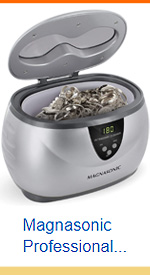

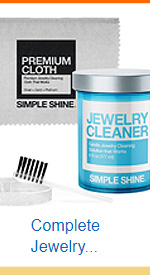
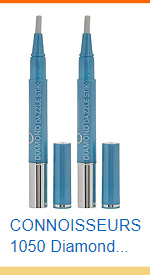
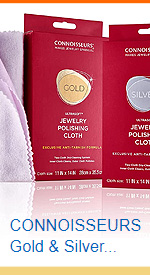
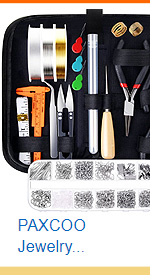
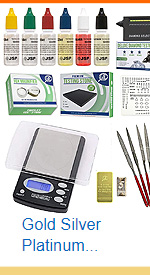

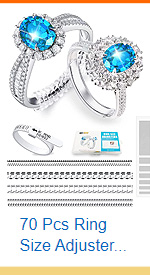
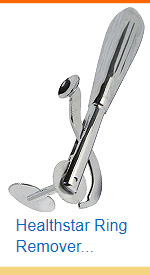
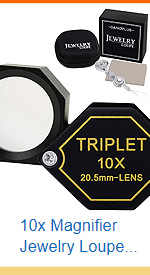
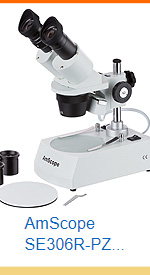




Leave a comment